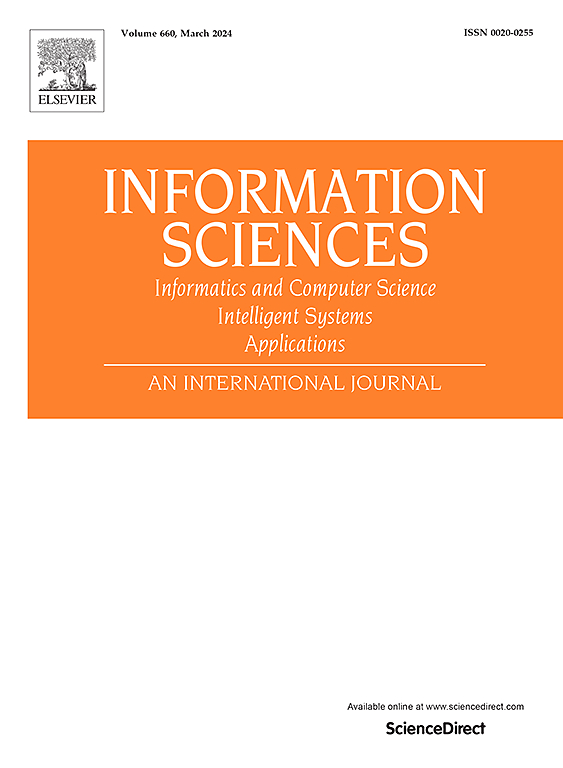Detecting the jumps from the data: Elastic anomaly detection algorithms and parameter estimation of uncertain differential equations with jumps
IF 6.8
1区 计算机科学
0 COMPUTER SCIENCE, INFORMATION SYSTEMS
引用次数: 0
Abstract
In financial and actuarial modeling, alongside diverse other applied domains, stochastic differential equation models incorporating jump components, used to characterize the dynamics of financial variables, have witnessed a marked rise in prominence in recent years. The jump component serves to capture event-driven uncertainties, including corporate defaults, operational failures, or insured events.
However, to detect the jump component is a very vital but challenging issue. Uncertain differential equations are used widely to model many complicated phenomena in financial market, physics, engineering, and so on. One of key research issues in this area is to estimate the parameters of the corresponding equations based on observations from their solutions.
One parameter estimation framework for uncertain differential equations with jumps, combining numerical algorithms and moment methods, is proposed in this paper. To be more precise, one anomaly detection algorithm is designed to preprocess the data first; then the process of parameter estimation is implemented by the method of moments. To illustrate our method, some numerical examples are given. Additionally, empirical studies of quarterly government consumption expenditure data for Australia as well as Microsoft's stock prices are also presented. With a throughly comparative study with other jump detection methods as well as a study with its stochastic counterparts for real data, our model outperforms all others. We conclude this paper with some possible directions and remarks.
从数据中检测跳跃:弹性异常检测算法和不确定微分方程的参数估计
在金融和精算建模以及其他各种应用领域中,近年来,用于表征金融变量动态的包含跳跃分量的随机微分方程模型得到了显著的发展。跳转组件用于捕获事件驱动的不确定性,包括公司默认值、操作失败或投保事件。然而,检测跳跃组件是一个非常重要但具有挑战性的问题。不确定微分方程被广泛用于金融市场、物理、工程等领域的许多复杂现象的建模。该领域的关键研究问题之一是基于对方程解的观测来估计相应方程的参数。本文提出了一种结合数值算法和矩量法的不确定跳变微分方程参数估计框架。为了更加精确,设计了一种异常检测算法,首先对数据进行预处理;然后利用矩量法实现参数估计过程。为了说明我们的方法,给出了一些数值算例。此外,本文还对澳大利亚的季度政府消费支出数据以及微软的股价进行了实证研究。通过与其他跳跃检测方法的全面比较研究以及对真实数据的随机对应物的研究,我们的模型优于所有其他模型。最后,我们提出了一些可能的方向和注意事项。
本文章由计算机程序翻译,如有差异,请以英文原文为准。
求助全文
约1分钟内获得全文
求助全文
来源期刊

Information Sciences
工程技术-计算机:信息系统
CiteScore
14.00
自引率
17.30%
发文量
1322
审稿时长
10.4 months
期刊介绍:
Informatics and Computer Science Intelligent Systems Applications is an esteemed international journal that focuses on publishing original and creative research findings in the field of information sciences. We also feature a limited number of timely tutorial and surveying contributions.
Our journal aims to cater to a diverse audience, including researchers, developers, managers, strategic planners, graduate students, and anyone interested in staying up-to-date with cutting-edge research in information science, knowledge engineering, and intelligent systems. While readers are expected to share a common interest in information science, they come from varying backgrounds such as engineering, mathematics, statistics, physics, computer science, cell biology, molecular biology, management science, cognitive science, neurobiology, behavioral sciences, and biochemistry.
 求助内容:
求助内容: 应助结果提醒方式:
应助结果提醒方式:


